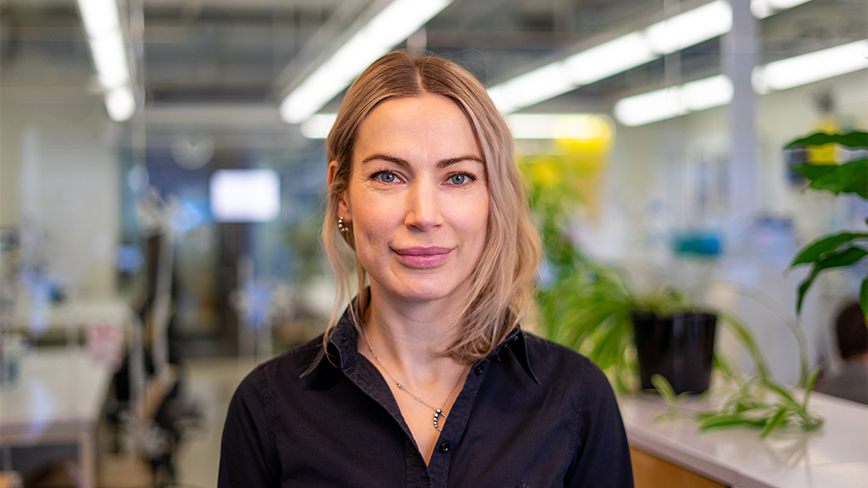New method can map B and T cell receptors in human tissue

Researchers at KTH, KI and SciLifeLab have found a way to identify unique immune cell receptors and their location in tissue. The results were published in the journal Science.
“In collaboration with Frisén lab at KI, and especially the other two lead authors Camilla Engblom and Qirong Lin, we have developed a method that can map B and T cell clones in human tissue, and thereby uncover mechanisms of the immune system at an unprecedented level,” says Kim Thrane, postdoc at the Department of Gene Technology.
The work builds on Spatial Transcriptomics , a previous invention from Lundeberg lab (KTH) and Frisén lab (KI) published in 2016, where mRNA molecules from a tissue section are captured onto a glass slide and labelled with positional barcodes. The final output is a microscopy image of the tissue coupled with gene expression levels from thousands of positions across the tissue. Gene expression levels reveal what genes are being used and from this one can infer both what cell types are there and what functions they have.
"This has many applications in basic research to get a better understanding of different tissues, but also in diseases such as cancer."
Add-on to earlier findings
In the recent project, the researchers modified the Spatial Transcriptomics workflow and used long-read sequencing to reveal the full-length diversity of B and T cell receptor mRNAs. Usually when measuring gene expression, only a short stretch of each mRNA molecule is decoded, which is enough to know what gene it is derived from. These types of receptors, however, come in a myriad of varieties to be able to bind different types of antigens, such as bacteria or cancer cells. In other words, the whole mRNA molecule needs to be decoded to obtain the full picture and this requires a special sequencing approach.
“Our method can be viewed as an add-on to Spatial Transcriptomics because we still obtain the same output, but from each position in the tissue we also have information on what B and T cell clones are there and what their receptors look like,” says Kim Thrane.
“In the article, we explore B and T cell clonal dynamics and spatially track clonal evolution in lymphoid tissue, and in breast tumor tissue, we identify distinct lymphocyte clones that co-localize with regions of the tumor that differ in gene expression. The fact that regions within the same tumor differ in gene expression (known as intratumoral heterogeneity) is common but challenging, because the different regions may not respond to the same treatment. With our technology we were able to, for each such regions, identify unique immune cells clones that are possibly attacking cancer cells.”
“What is truly remarkable here is that we decode the nucleotide sequences of their receptors, which means that they can be produced in a lab for therapeutical use.”
New insights
According to the researchers, the new method called Spatial VDJ, may provide new insights in a wide range of biological phenomena. B and T cells are lymphocytes of the adaptive immune system and play key roles in infection, inflammation, and immunity.
“We predict that Spatial VDJ can be used to answer many clinically relevant questions, such as outlining the mechanisms of vaccination and aiding in vaccine development. A promising application in cancer would be to, as mentioned, identify clones that can bind tumour cells and then make use of their receptors therapeutically through engineered cells or antibody-based drugs.”
Text: Jon Lindhe

